Hospitallers: loud fame and life after "death"
Another point of attraction for tourists on this street is the cafe Antico Caffe Greco, founded in 1760, which was visited by Goethe, Wagner, Byron, Casanova and the English romantic poet Keats, who also lived in the house diagonally.
Palazzo di Malta is not the most conspicuous building, and only seeing a strangely familiar red flag with a white Latin cross and reading the inscription on the door, a knowledgeable person suddenly realizes that there is a sovereign state (total area 0,012 sq. Km) recognized by 105 countries, with one hundred of which he has diplomatic relations. States having the right to issue their own passports, issue stamps and mint coins.
The official languages of this state are Latin and Italian, and the title of its head sounds like a spell from previous times:
By the grace of God, of the Holy Stongest House of St. John of Jerusalem and of the military (knightly) Order of the Holy Sepulcher, the Humble Master and the Sick in Christ Jesus the Guardian.
But there were still titles of the Prince of the Holy Roman Empire, the reigning prince of Rhodes and Malta, now lost. But the current Humble Master and Guardian still has the rank of Cardinal and Prince of the royal blood, thus taking advantage of the titles of Advantage (which most often translates into Russian as “Eminence”) and of Highness: Your Eminent Highness is now supposed to refer to him . His predecessors were called:
Rector - until the summer of 1099
Master - up to 1489
Grand Master - until 1805
Lieutenant Master (that is, the person who holds the Master's degree) - until 1879.
This, of course, is about the Order of St. John, better known as the Order of the Hospitallers or the Order of Malta. "The Sovereign Military Order of the Hospitallers of St. John of Jerusalem of Rhodes and Malta," to be more precise.
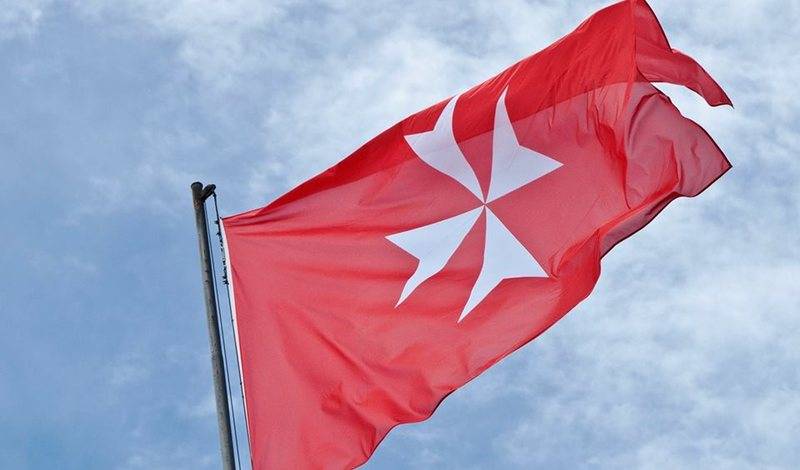
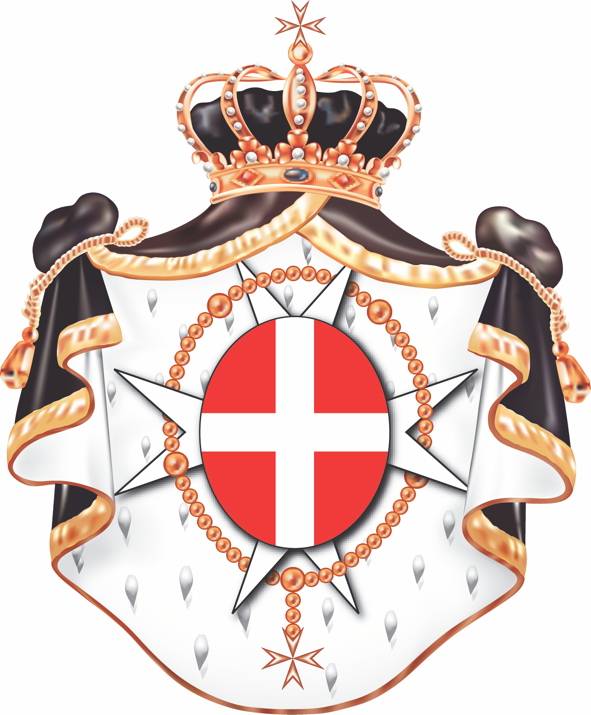
And it becomes a little sad when you look at this modest house, the long lines of the operetta title and the proud, but moth-scented flag. I remember the sad ancient Greek legend of Typhon - a beautiful young man, in whom the goddess Eos fell in love. She begged Zeus to grant him immortality, but forgot to mention eternal youth. As a result, Typhon became an immortal old man and, ultimately, turned into a cicada.
But how great and beautiful it all began! It began, of course, in Jerusalem, around 1048, when the Amalfi merchant Panteleon Mauro established the first hospital there. Panteleon chose St. John of Alexandria as patron of the men's section, but another John the Baptist became the patron saint of the Order of the Hospitallers: because the hospital was located next to the church of the same name. The patroness of the women's section was Mary Magdalene. The Benedictine monks worked there.
We have already talked about the titles of people who at various times headed the Order of the Hospitallers. But there was another one - a unique title: "Director and founder". It belongs to Pierre-Gerard de Martigues (Gerard Ten the Blessed): he and four other volunteer knights were entrusted to care for the wounded and sick by the first ruler of the Kingdom of Jerusalem Godfried of Bouillon in 1100.
The first hospital was restored at the same place, and in 1107 Balduin I also granted the village of Salsad in a suburb of Jerusalem. In 1113, Pope Paschal II approved the charter of the new fraternity, giving blessing for the construction of new hospitals for pilgrims in the port cities of Europe. The hospitals of the Brotherhood appeared in Sant Gilles, Asti, Pisa, Bari, Otranto, Taranto, Messina. A little later, a group of knights-crusaders led by Raymond de Puy from Provence, who became the first Master of Hospitallers (recall that Pierre-Gerard de Martigues wore the title of “director and founder”) joined the Brotherhood. It was under Raymund du Puy that the Hospitaller Brotherhood became a Military Order.
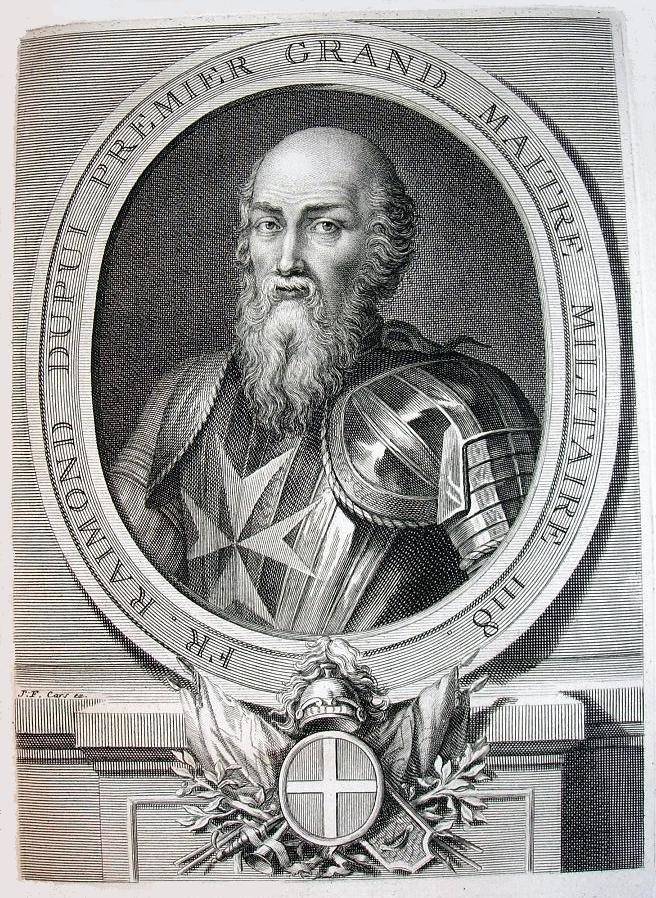
Those who entered the Order took three ordinary monastic vows - celibacy, poverty and obedience. At first, the candidates were not required to show evidence of their noble descent - a war horse, a knight’s weapons and armor. But since the beginning of the XIII century, the order’s members divided into three classes. The first was knights - the leaders of the Order could be elected only from among them.
The knights, in turn, were divided into 4 categories depending on their background and merit: full, obedient, loyal and preferential. To the second class belonged the order priests, "serving brethren" (sergeants) and qualified hospital staff. To the third class - service personnel, whose representatives did not give the vows of monasticism. Later, a fourth class appeared - sisters (women could also be members of this Order). Knights and sergeants took part in the fighting. The "confrares" - allies in military campaigns, and the "donators" (donati) - people who help the Order financially stood apart.
At first, most of the Knights Hospitallers were French. However, even then, there were also Italians and Spaniards among them. In 1180, the number of order knights in Palestine was already 600 people, and now they were divided into languages - national associations. Initially, the order included seven languages: Provence, Auvergne, France, Italy, Aragon, Germany and England. From among the knights of Auvergne, the commander of the infantry, the great marshal, was traditionally appointed. The knight from England commanded the light cavalry of mercenaries (the position was called Turkopole). Italy supplied the great admirals. A representative from Germany was appointed to the post corresponding to the current position of chief military engineer. France was supposed to nominate a candidate for the post of great hospitaller. The representative of Provence was appointed a great preceptor (chief treasurer). For Aragon was assigned post drape (responsible for supplying the army). When the Language of Castile appeared in the Order, its representatives began to be entrusted with the management of foreign relations (the post of the great chancellor). The heads of languages (pillars) were part of the Order Council - Chapter. Besides them, the lieutenant of the order (deputy master) and the bishop sat in the Chapter (in addition to the master). The Master and the Pillars could leave the main residence of the Order only with the permission of the Chapter.
In 1130, Pope Innocent II approved the banner of the order - a white cross on a red background, and the main seal, which was depicted lying patient with a lamp in his legs and a cross at the head.
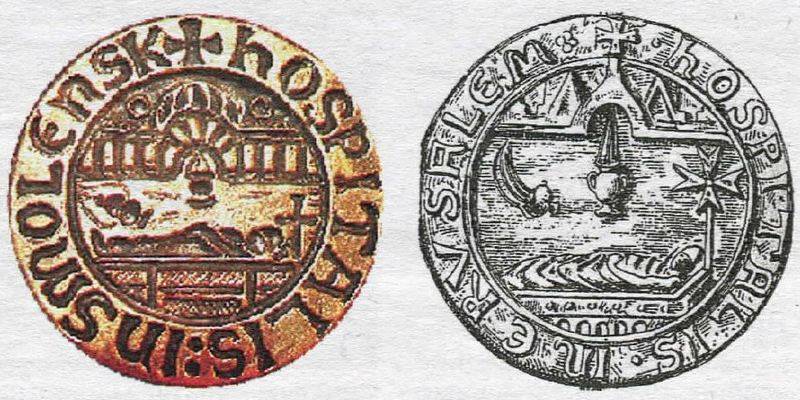
The distinctive sign of the Hospitaller was a white eight-pointed cross on his chest (later on he was called Maltese). White color was a symbol of chastity. The four directions of the cross symbolized the main Christian virtues: prudence, justice, temperance, strength of mind, eight of its ends - eight benefits promised to the righteous in the Sermon on the Mount.
Soon, the Vatican also gave the Hospitaller a tax exemption on property, the right to collect tithing in his favor and permission to send church services.
But let us return to the organization of the hospitals, in which the members of the new Order have achieved great success. Their main hospital in Jerusalem in 1170 had about 2000 beds, including obstetric beds. At this point, the attentive reader should be confused. Think about it: 2000 beds in Jerusalem of the XII century! And what about us now?
Hospital of Emergency Medical Care of Smolensk - 725 beds.
Military Clinical Hospital in Podolsk - 900 beds.
Research Institute named after N.V. Sklifosovsky - 962 beds.
Kaluga Regional Hospital - 1075 beds.
Republican Clinical Hospital, Kazan - 1155 beds.
Novosibirsk City Hospital №1 - 1485 beds.
The main military clinical hospital named after N.N. Burdenko - 1550 beds.
And finally, the Order of St. John’s Hospital in Jerusalem in 1170 - 2000 beds! Applause and curtain.
The fact is that the gospital of St. John (from the Latin word "guest") is not a hospital, as they often think, but something like an all-inclusive hotel in which a pilgrim from Europe could get a full set of services: from an overnight stay with food to medical care and religious requirements. And the Order of the Hospitallers acted as an advanced tour operator: a pilgrim from Lyon or Paris could rest on his way to the Holy Land at Messina or Bari hospital, in Jaffa he was met and escorted to Jerusalem (yes, pilgrims caravans guarded not only the Templars), where he could settle in the main hospital of the Order. As for the sick, the pilgrimage to Palestine in those days was a difficult test even for absolutely healthy people who underwent cruel 'natural selection "on their way and the weakest of them simply did not get to Jerusalem. Some of the pilgrims, of course, could get sick in Jerusalem, or to be wounded, but most of them did not need treatment and received other services from the Order.
In addition to the hospital itself, the Order also contained shelters for foundlings and babies. And for the poor, the Order's brothers organized hot free meals three times a week.
However, one should not exaggerate the disinterestedness of spiritual and knightly orders. The relationship between the hospitallers and the Templars was very strained. And the reason for this was not at all the competition for the right to benefit the pilgrims arriving in Palestine. One of their chroniclers wrote then:
If Muscovites, according to Bulgakov, “spoiled the housing problem,” then the Hospitallers and Templars are a matter of distributing diverse sponsorship. Well, and military booty, too, of course.
In 1134, the childless king of Aragon and Navarre Alphonse I, the Warmaster, bequeathed his possessions to three Palestinian orders: Johnites, Templars, and Knights of the Holy Sepulcher.
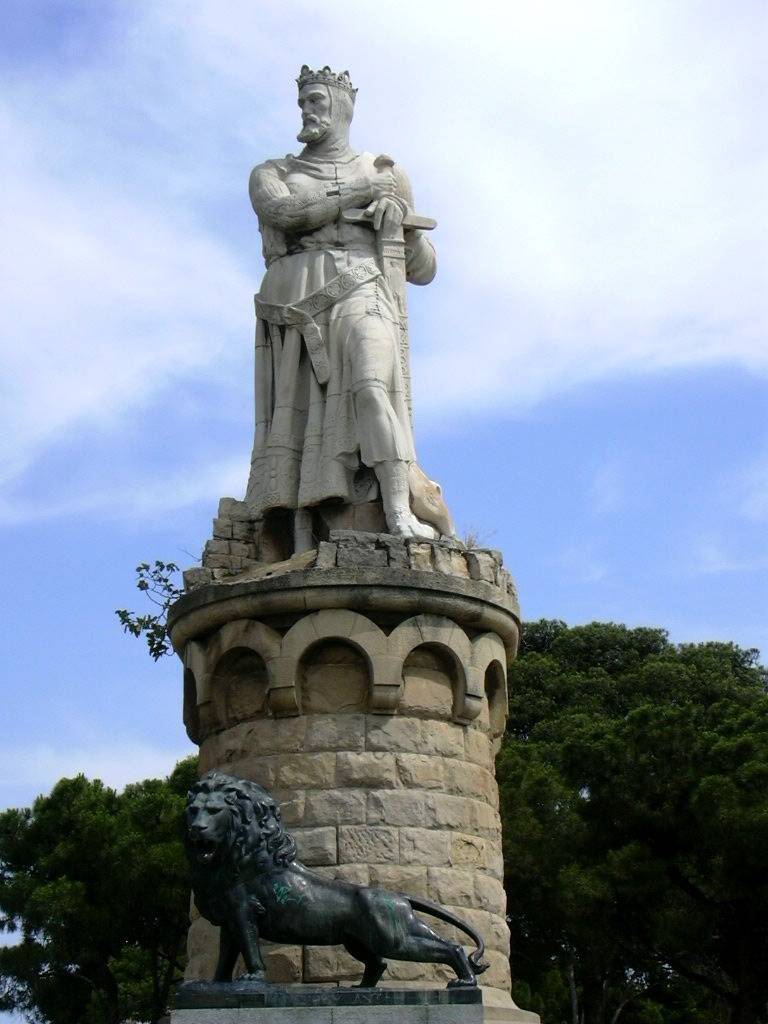
The Hospitallers gained extensive possession in Provence. And by the beginning of the XIII century. The Order of Johannites owned nineteen thousand estates in different countries. In modern France, the former possessions of the Johannites can be unmistakably identified by the name "Saint-Jean" in the name. The Templars were doing well in this direction too, see the article. Ryzhov V.A. The rise and fall of the Templars
However, there is never much money and land.
But all, of course, much more interested in combat story Order.
So, having a little accustomed in the Holy Land, the hospitallers took upon themselves the duty of military defense of the Holy Sepulcher and "fighting against the infidels wherever they were found." At first they, like the Templars, guarded the pilgrims on their way from Jaffa to Jerusalem. The logical continuation was the cleansing of the surrounding area from the robbers and organized Saracen units, occasionally rushing to Jerusalem. It was at this time that the name "Brotherhood" (Brotherhood) was finally replaced by "Order". In 1124, the Hospitallers distinguished themselves by taking the important port city of Tire. Between 1142 and 1144, the Hospitallers acquired five counties in Tripoli district and a sovereign principality in the north of the Kingdom of Jerusalem. In 1144, Count Raymond II Tripolitanian named after them several border fortresses, including the famous castle Krak de Chevalier.
By 1180, the order was controlled by 25 castles in Palestine. And in 1186, the garrison of the hospitallers occupied Margat’s castle. But we are a little ahead.
The situation in the middle of the XII century was very serious. In December 1144 fell Edessa, the threat of annihilation loomed over all Christian possessions in the region. A desperate call for help was heard in Europe, and in 1147, the Christian armies set off for the II Crusade. He was not very successful, but the Hospitallers showed themselves during the siege of Damascus, when they managed to defeat a large cavalry unit of the Saracens, who were sent to help the besieged. In 1153, the Master of Johannites Raimund du Puy persuaded the King of Jerusalem Baldwin III to go to Ascalon. After a long grueling siege, the city was taken. But the campaign on Cairo 1168 was unsuccessful and was remembered only by the massacre of Muslims in the city of Bilbais. In 1184, the masters of the Hospitallers (Roger de Moulins), the Templars and the Patriarch of Jerusalem made a joint journey to Europe to try to incline the monarchs to a new crusade.
1 May 1187, under Nazareth, the Hospitallers and Templars entered into battle with the army of Salah ad-Din and were defeated, with the great Master of Johnnie Roger de Moulin killed in battle.
In July of the same year, the last King of Jerusalem, Guy de Lusignan, moved towards the Sultan of Egypt.
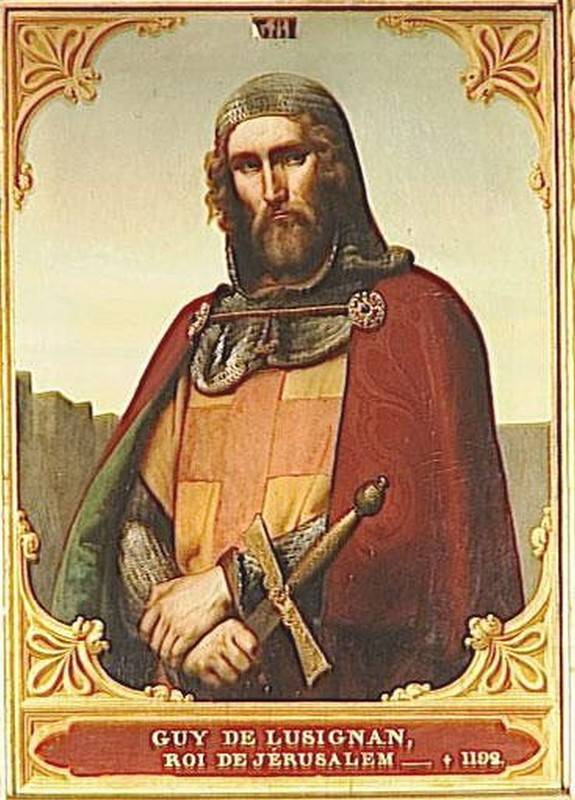
July 4 near the village Hattin there was a decisive battle in which the Crusaders suffered a catastrophic defeat. The king of Jerusalem and the master of the templar were taken prisoner. More details about these events and the fall of Jerusalem are described in the article. Ryzhov V.A. The rise and fall of the Templars.
We will not repeat.
During the Fourth Crusade (1199-1204), the Johannites seized significant Byzantine possessions in the Peloponnese. During the Fifth Crusade (1217-1227), the Hospitallers participated in the siege of the Egyptian city of Damietta (1219). At the insistence of Master of St. John, the Crusaders then refused to conclude a truce in exchange for the transfer of Jerusalem: far from the Christian seaside possessions and the city left without walls, it was simply impossible to keep. Many then blamed the hospitallers for betraying the cause of the Cross, but subsequent events confirmed that they were right: in 1229, Emperor Frederick II Hohenstaufen concluded a peace treaty with the Egyptian Sultan under similar conditions, ended with the inglorious loss of Jerusalem in 1244.
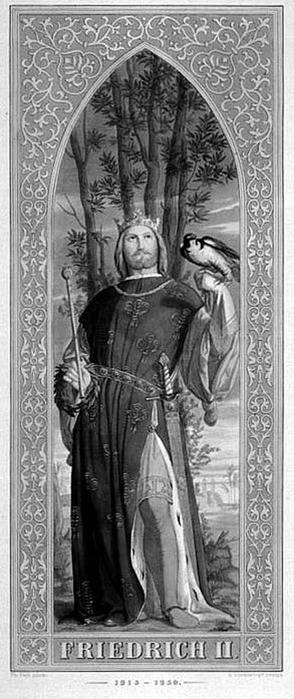
But back in the 1219 year. November 5 Damietta was taken, half of the civilian population of the city was exterminated, the Crusaders ’mining was approximately 400 thousand of Bezant. But the strength to hold the city was not enough, after a few years it had to be left. Crusader forces dried up, defeat followed defeat. During the VI Crusade in the Battle of Gaza (October 17 1244), the Sultan of Egypt Beibars defeated the allied army of the Crusaders. Master of Hospitallers Guillaume de Chateauneuf was in captivity.
In 1247, the Hospitallers lost Ascalon. During the battle of Mansur (1249, VII Crusade) another MSc is captured by the Muslims - along with 25 knights. In 1271, the castle Krak des Chevaliers seemed impregnable. In 1285, after a month-long siege, the Johnites left Margab Castle: as a sign of respect for their courage, Sultan Kalaun allowed the Hospitallers to leave with banners and weapons in their hands. In 1291, the Master of Hospitaller Jean de Villiers, who had already been wounded, was covering up the evacuation of the citizens of Acre, the last to board the last ship.
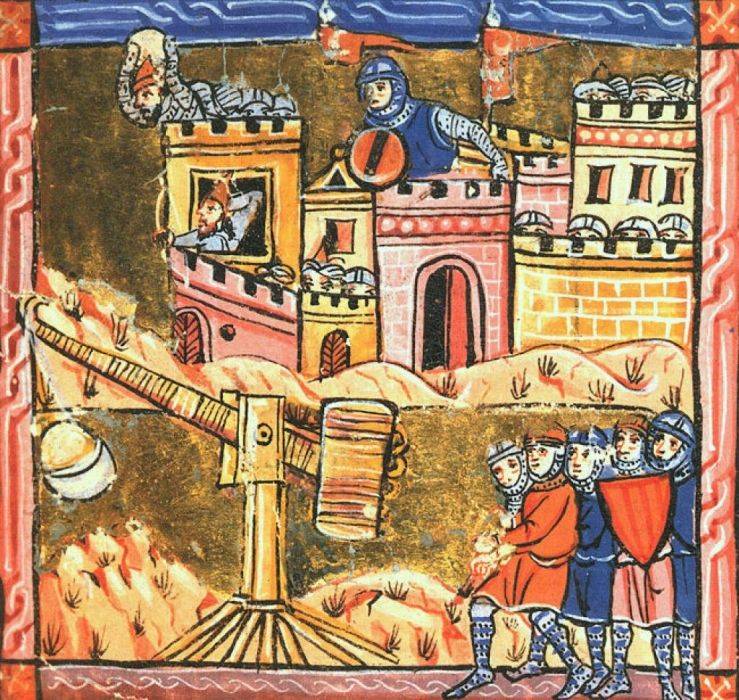
With the remnants of his troops, he went to Cyprus, where the Johannites were located before 1306. That year the Hospitallers allied with the Genoese pirate Vignolo Vignoli went to conquer the island of Rhodes. The Genoese considered the island "their" (they even managed to sell it to the Johanites), but in reality Rhodes belonged to Byzantium - to the Christian state, but the crusaders already had experience of war with the Orthodox "schismatics" (IV Crusade). The fighting continued until the summer of 1308, the war ended with the victory of the Johannites. Having occupied the island, Villaret proclaimed him the possession of the Order and transferred the Hospital here. In order to help the hospitalisers who were fairly costly, Pope Clement V appointed them the 1312 special bull as the heirs to the property of the abolished Templar Order. True, the hospitallers didn’t get much, as the kings of France and England had already appropriated the property of the Templars and were not going to return anything to anyone. And in other countries there were also enough people who wanted to profit from Darmeschmenka. Nevertheless, even a small part of the "inheritance" was enough for the Hospitallers to pay off the accumulated debts and strengthen Rhodes as a new order base. Moreover, the Order still had significant ownership in Europe - especially in France and Aragon (in this kingdom, the Order was among the largest landowners in general). But the Portuguese branch of the Order by the middle of the XIV century broke away from Rhodes, and from those acted as an independent organization. The Portuguese Hospitallers fought mostly with the Moors of North Africa, in 1415 they, along with the Order of Christ (former Portuguese Templar), took part in the seizure of the Moroccan fortress of Ceuta.
And the main enemies of the hospital of Rhodes were Mameluke Egypt and Ottoman Turkey. Due to new circumstances, the Order of St. John became now a naval, and the knight-hospitaller appeared before all not a horseman in armor, but a captain of a warship. For many years, the navy of the Order became a serious factor, having a great influence on the political situation in the Mediterranean region. The main combat ship of the Order was the Dromon galleys, the largest of which was the six-deck battleship Saint Anna.
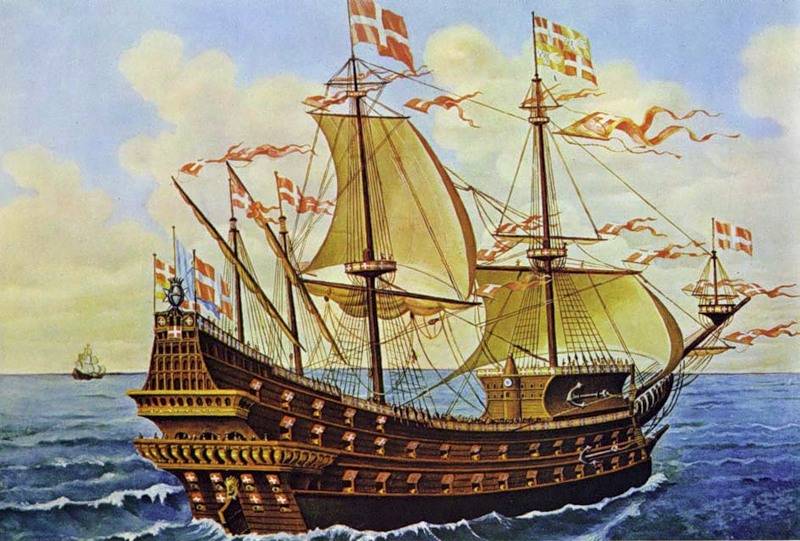
The first to grip the new owners of Rhodes were Muslim pirates. And in 1319, the order squadron defeated the connection of Turkish ships near the island of Chios. Angry Turks tried to solve the unexpected problem radically - by capturing Rhodes. In 1320, eighty Turkish ships set off for the island - and were defeated in a naval battle. In 1344, the Hospitallers captured the city of Smyrna in Asia Minor and deployed a garrison in it under the command of the prior of Lombardy Jean de Bianard. In 1365, the combined fleet of Rhodes and Cyprus landed troops from Alexandria and captured it. And then there was a "system crash": in 1383 — 1395. the Catholics turned out to be the 2 fathers at once, each of whom appointed a master’s degree, which weakened the Order and was only in the hands of the Ottomans, the Mamelukes and the pirates. In 1396, the Hospitallers took part in the famous Battle of Nikopol, in which the army of the Turkish Sultan Bayazid inflicted a terrible defeat on the crusaders. Master Philibert de Nayak, in order to buy the prisoners, agreed to pay thousands of ducats to the Turks. And in 30, Smyrna fell, captured by Timur's troops who came to Asia Minor. “Iron Lame” scared everyone so much that in 1402 there was an unexpected coalition which included Islamic Turkey and Christian Genoa, Venice, Byzantium and the Order of Johannites. That year the hospital was able to conclude an agreement with Egypt, according to which they were able to patronize Christian shrines in Palestine. In 1403, the Knights of Rhodes came to the aid of Cyprus, which was attacked by the troops of the Egyptian Sultan Barsbey. The war lasted for 1424 of the year and ended with the defeat of the Christians. Now it’s the turn of Rhodes, and in August 2, the Egyptian commander al-Zahir made the first attempt to capture him. The Hospitallers under the leadership of Master Jean de Lasti managed to defend their island. But this was only the beginning. After the fall of Constantinople in 1444, Rhodes was at the forefront of the fight against the gathering power of Ottoman Turkey. 1453 May 23 The Turks landed a fifty thousand strong army on the island (including the 1479 Janissaries) under the command of the serasker Mesih Pasha (converted to Islam by Manuel Paleolog). The 3000 day of May became critical, in which the storming of the Hospitaller fortress began. According to the legend, Mesih Pasha significantly undermined the morale of his troops, giving the order: "I forbid plunder, everything will go to the Sultan's treasury." As a result, the frustrated Turks did not go too eagerly on the walls, and the assault failed. However, the siege lasted even more than a year, and only in August 27 were the remnants of the Turkish army evacuated from Rhodes. The defeat was so noticeable that the Turks for forty years did not dare to attempt an revenge. The military authority of the Hospitallers reached unprecedented heights, in Europe they were called "Rhodian lions".
After the death of the Turkish Sultan Mehmed II the Conqueror in 1481, his two sons fought for the throne. The eldest was victorious, he ascended the throne under the name of Bayazid II Dervish.
The youngest fled to the John, who gave him refuge with the condition of paying them 150 thousands of scudo in gold if he ascended the throne. The most interesting thing is that Bayazid was quite satisfied with this situation, and he even concluded an agreement with the Order, according to which he agreed to pay 35 thousands of Venetian ducats annually for the maintenance of the fugitive prince, and also handed the master the hand of John the Baptist - with the condition that will return home. In 1489, the Hospitallers made another extra profitable deal: they handed the Turkish prince to the Pope in exchange for possession of the recently dissolved Orders of the Holy Sepulcher and St. Lazarus.
By the beginning of the 1520's. The situation in the region has deteriorated significantly. At the head of the Ottoman Empire stood, perhaps the most powerful ruler of this country - Sultan Selim I Kanuni (Legislator). He is better known to us as Suleiman the Magnificent.
In 1517, the Turks conquered Cairo, four years later Belgrade was in the hands of the Ottomans, and the Sultan mockingly informed all European sovereigns (including the hospital master William de l'Ile-Adam) about his victory. In 1522, the Ottoman commander Mustafa Pasha led to Rhodes 400 ships with warriors on board. Pasha was accompanied by the famous Turkish pirate Kurdoglu. The Hospitallers at that time had 290 knights, 300 squires and 450 hired warriors. Locals fielded a militia of 7000 people. Each Language was assigned a specific area of defense. The languages of Italy, Castile and France defended the island from the sea, Auvergne, Provence, Aragon, England and Germany — they fought with the Turkish landing forces. In October, the Sultan dismissed the commander-in-chief and appointed Ramelia Beylerbey Ahmed Pasha to replace him. December 17 The Turks went on a decisive assault that lasted three days and ended with the surrender of the hospitallers. The terms of delivery were mild and honorable: the knights had to leave the island in twelve days with weapons, property and an archive. 1 January 1523 The surviving 180 members of the Order, led by Magister Villiers de l'Ile-Adam, left Rhodes on three galleys: "Santa Maria", "Santa Caterina" and "San Giovanni". Along with them, thousands more left the island 4. Thus ended the glorious Rhodian period in the history of the Order of the Hospitallers.
24 March 1530. Emperor Charles V of Habsburg provided the hospital of the island of Malta and Gozo. The Hospitallers recognized themselves as vassals of the viceroy of the Kingdom of Spain and the Two Sicilies. Feudal service was small and wore a purely symbolic character: the great master had to send the falcon falcon to the monarch every year (this condition was observed up to 1798). In addition, they pledged to protect the outpost of Spain in North Africa - the city of Tripoli. The residence of the head of the Order was the city of Birga. Already in 1551, the Turks attacked the new possessions of the Order. Tripoli was captured, the fortifications of Gozo Island were also destroyed.
In 1557, 67-year-old Jean Parisot de la Vallett became the head of the Hospitaller, destined to become the greatest master of the Order.
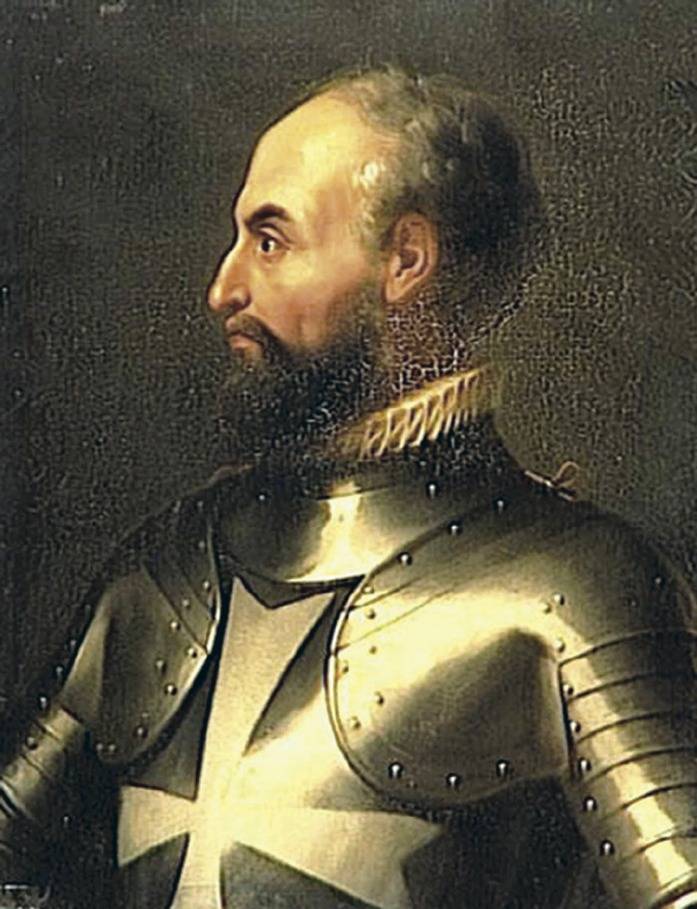
The reason for the new war was the seizure of the ship by the chief eunuch of the sultan's harem, which was declared a personal insult to the sultan. 18 May 1565. A Turkish army of 30 000 people landed on the island. At its head again stood Mustafa Pasha - the same one that was besieged by Rhodes in 1522. The Great Siege of Malta lasted almost four months - from May 18 to September 8. The Turks delivered the main blow to the forts of San Elmo, San Angelo and San Michele. The garrison of San Elmo, consisting of 120 knights and a detachment of Spaniards, died, but the Turks lost 8 thousands of people, among whom was the famous Algerian pirate Dragut. It is said that, inspecting the ruins of the captured fort, Mustafa Pasha said: "We can only guess what resistance we will get from the father (he meant the city of Birgu) if the child, almost a baby (Fort San Elmo) cost us the lives of the bravest soldiers ! "
Nevertheless, the forces of the Order were running out, it seemed that there was no salvation, but on September 7 a combined fleet of the Viceroy of Sicily and the Order of Santiago de Campostelo appeared off the coast of Malta. September 8, having suffered a defeat in a naval battle, the Turks were evacuated from Malta and went to Constantinople. It is believed that during the Great Siege they lost 25 thousands of people. The loss of the Order amounted to 260 knights and 7 thousands of soldiers. 28 March 1566 was laid the new capital of Malta, which was given the name in honor of the master who defended the island - La Valletta.
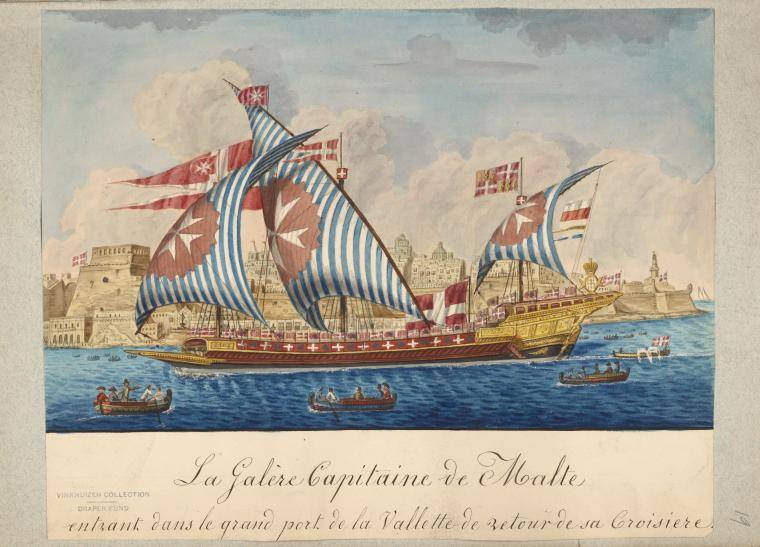
It is worth saying that Valletta is the first city in Europe, built according to a predetermined master plan. Italian architect Francesco Laparelli planned the streets taking into account the sea breeze air flow and arranged a centralized sewer system.
In 1571, the Order fleet participated in the famous sea battle at Lepanto, in which the Turkish fleet suffered one of the worst defeats in its history. In the first half of the XVII century, the Maltese ships participated in 18 naval battles (off the coast of Egypt, Tunisia, Algeria, Morocco), each of which ended with the victory of the hospitallers.
With the weakening of the onslaught of the Turkish onset, the increasingly self-conscious John began to themselves either openly pirating (corsa) themselves, or using the “right of whists” - the authority to inspect ships suspected of carrying Turkish goods, with their subsequent confiscation and resale in Valletta. They did not remain indifferent to the trade in the "ebony" - that is, slaves. However, since the middle of the XVII century, the position of the Order begins to deteriorate. During the Reformation, the Hospitallers lose their possessions in Germany, Holland, Denmark. In England, the Order was completely outlawed and all its property was confiscated. At this time, for the first time, Russian authorities are beginning to show interest in the Order of Hospitallers. In 1698, the boyar BP arrived on the island of Malta. Sheremetev - trustee of the Moscow Tsar Peter Alekseevich. In the Tsarist letter, it appeared that the boyar was going to Malta to "hunt him", but he probably performed some diplomatic missions related to the possible conclusion of a military alliance against Turkey. In 1764, Empress Catherine II commissioned the ambassador in Vienna, DA Golitsyn, to find the Maltese knight, who was knowledgeable in the construction and management of galleys. Later Russian navymen were sent to Malta for training, who spent several years there. In 1770, Catherine II requested the Knights of Malta to assist the squadron of GA Spyridov. Alexei Orlov, during his expedition to the Archipelago, sent the captured Algerians to the Great 86 Magister to exchange for Christians captured by pirates, and in August 1772 he himself visited Malta - incognito.
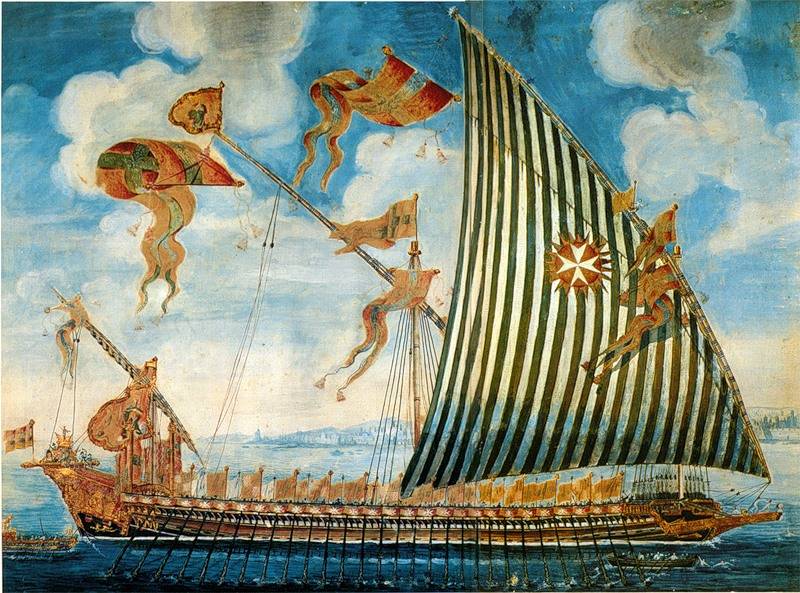
4 January 1797 of the year between the Order and Russia even signed a convention, according to which the Russian Roman Catholic Grand Priory was established.
At the end of the 18th century, a blow was struck at the Order, from which he never recovered. Initially, in France, the revolutionary government, by decree of September 19, 1792 confiscated all the property of the Order. And 10 June 1798, the French fleet approached Malta, en route from the port of Toulon to Egypt. General Bonaparte demanded a surrender from Grand Master Gompesh, which 12 Jun signed faintly: Malta passed under French sovereignty, and the knights had to leave the island within three days. Later, Gompesh justified himself by the fact that, according to the rules of the Order, it was impossible to raise arms to Christians (he either forgot about the Byzantines or did not consider them "real" Christians). The wealth accumulated by the Order (almost 30 million lire) went to the French.
On August 26, 1798, in the "castle of the Maltese Knights" on Sadovaya Street in St. Petersburg, cavaliers of the great priory of Russia protested against the capture of Malta, condemned the Grand Master for surrendering the island without a fight and announced his deposition. It was also decided to appeal to Emperor Paul I with a request to accept the Order of St. John under patronage and patronage. On September 10 of the same year, Paul I granted their request. Petersburg was declared the headquarters of the Order of Malta, knights of all "Languages" and priori were invited to Russia, the president of the Academy of Sciences, Baron Nikolai, was instructed to designate the island of Malta as the "province of the Russian Empire" in the published calendar. Almost impregnable island as the base of the Russian fleet in the Mediterranean - it was, of course, a strong decision. All further wars with Turkey would go in a completely different scenario.
27 October 1798 d. Paul I was proclaimed Grand Master of the Jerusalem Order of St. John, on November 13 the emperor announced his agreement to accept this title. He became 72 in the list of masters.
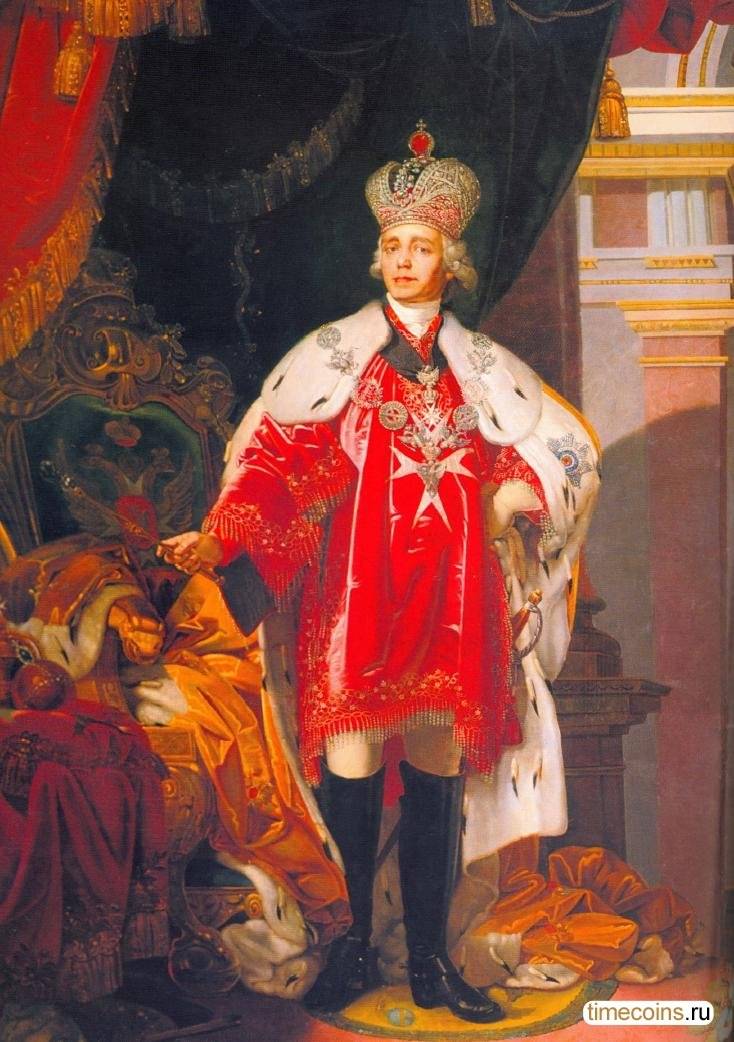
The great priors of Germany, Bavaria, Bohemia, Naples, Sicily, Venice, Portugal, Lombardy and Pisa recognized Paul I as the Grand Master. Only the priors of Catalonia, Navarre, Aragon, Castile and Rome refused - and this was very short-sighted on their part, since only the Russian emperor could now guarantee the Order a decent existence.
5 September 1800, besieged by the British, the French garrison of Malta capitulated, but the British were greedy - they did not return the island to its rightful owners. This deeply insulted Paul: Russia withdrew from the second anti-French coalition, and soon the rapprochement of Paul I with Napoleon began.
The decision of Paul I to entrust himself with the title of Grand Master of the Catholic Order of St. John (the Knights of Malta) had a huge resonance in Russian society. This circumstance gave Pushkin the basis to call Paul I "our romantic emperor," and Napoleon, the "Russian Don Quixote."
"Arakcheev is the Maltese cavalier, only he lacked to be brought into the troubadours," Berngardi sneered at this.
The subordination of the Order of Malta to the Pope and the rumors that Paul was going to convert to Catholicism embarrassed many of the minds of the time. Therefore, it seemed that the new idea of the emperor was doomed to failure. It turned out the opposite: the glorious history of the Order, dating back to centuries, red mantles with eight-pointed white crosses, mysterious rites and numerous privileges contributed to the fact that there was no shortage of people willing to enlist in knights. The Maltese project turned out to be the most popular of all the projects implemented by Paul I. In Russia, a new state award was established - the Order of St. John of Jerusalem, in 1799, Alexander Suvorov was awarded with his cross of commander (Alexander I abolished this award) . It was then that the Maltese knights that arrived in Russia initiated the creation in St. Petersburg of the famous Page Corps - a super-privileged educational institution, where children of officials of at least 3 rank were admitted: the white Maltese cross remained the icon of its graduates.
After the murder of his father, Alexander I, who was afraid to death of both the British and Russian aristocrats, who very willingly killed their emperors for British money, cowardly refused the title of Grand Master, and Malta, and from the extremely advantageous Russia alliance with Napoleon. 9 February 1803 The Pope of Rome appointed the Grand Master of the Order of Malta Giovanni Battista Tomassi to the vacant position. The place of temporary stay of hospitallers became first Catania, and then - Messina. After the death of Tomassi in 1805, the new head of the Order received only the title of Lieutenant Master (the title of Grand Master was restored in 1879). At the end of the Napoleonic Wars in the Paris Agreement of the victorious powers, Malta was finally recognized as the possession of the British crown (March 30, 1814). In 1831, the residence of the Order of Malta that lost its home was the building of the former Ambassador of the Order to the Holy See - Palazzo Malta on Via Condotti, which was discussed at the beginning of the article. For some time, the Order of St. John was still trying to carry out humanitarian missions. In 1910, a hospital was organized that helped the wounded during the Italo-Libyan war (1912). The Order hospital ship "Regina Margarita" then evacuated from the area of hostilities around 12 000 wounded. During World War I, several hospitals were organized in Germany, Austria and France under the patronage of the Order.
Currently, the Order of the Hospitallers has more than 10 thousands of members, second only to Jesuits. The Order includes 6 Main Priorities (Rome, Venice, Sicily, Austria, Czech Republic, England) and 54 national commands (including in Russia). In some Catholic countries, there are order hospitals and social shelters, which are funded by governments or social security funds at the place of stay. Volunteers of Malteser International, (the World Relief Agency of the Order) participate in the aftermath of natural disasters and provide assistance to civilians in areas of armed conflict. Sources of income of the Order are now donations from individuals and the sale of postage stamps, various souvenirs.
The diplomatic relations of the Order with Russia were restored in 1992, the post of ambassador is combined by the representative of the Russian Federation at the Vatican. 4 July 2012, for the first time in 200 years, the Grand Master of the Order of Malta visited Russia. During this visit, SK was awarded the Knight's Cross. Shoigu. Considering his many years of work in the Ministry of Emergency Situations, this award does not cause objections and questions from hospitallers. But the knight’s cross of the Order of Malta in Russia is discredited by handing it to other, much more dubious cavaliers: M. Gorbachev, B. Yeltsin, B. Berezovsky, G. Burbulis, V. Yumashev, S. Yastrzhembsky ...
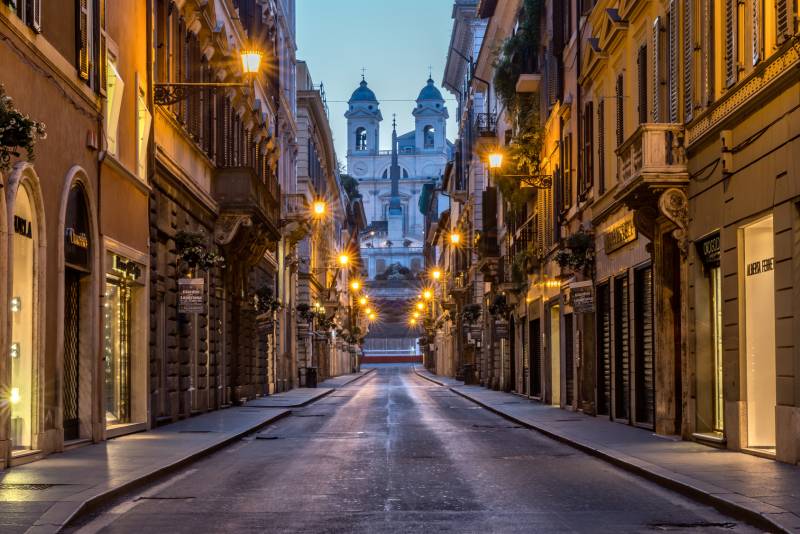
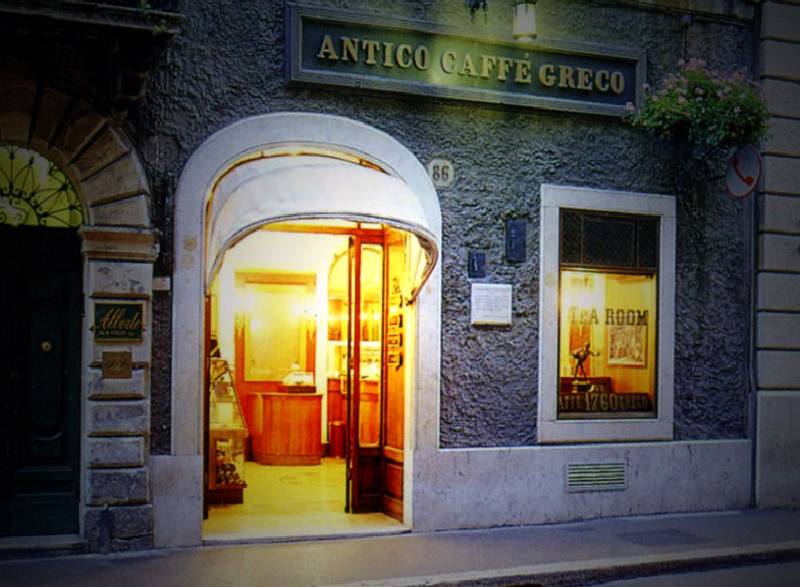
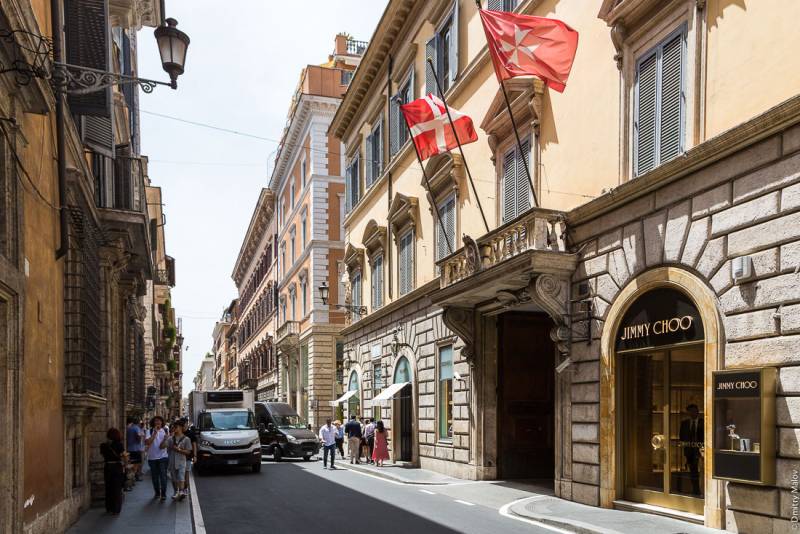
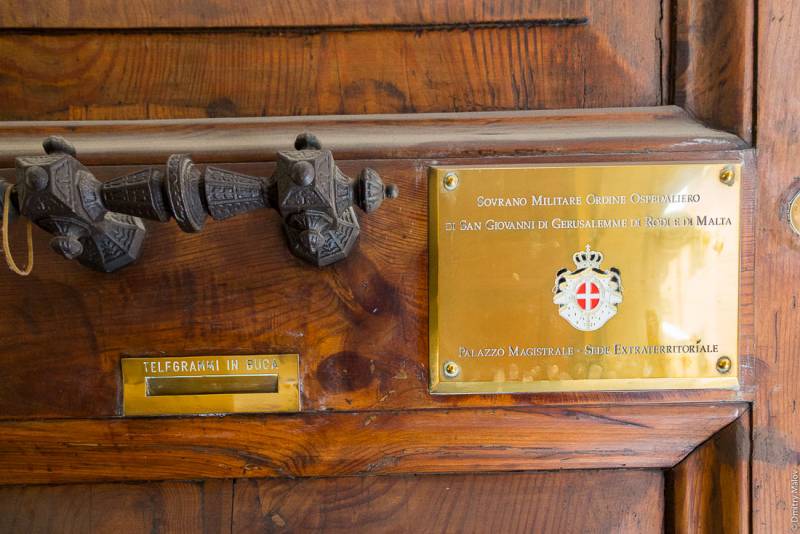
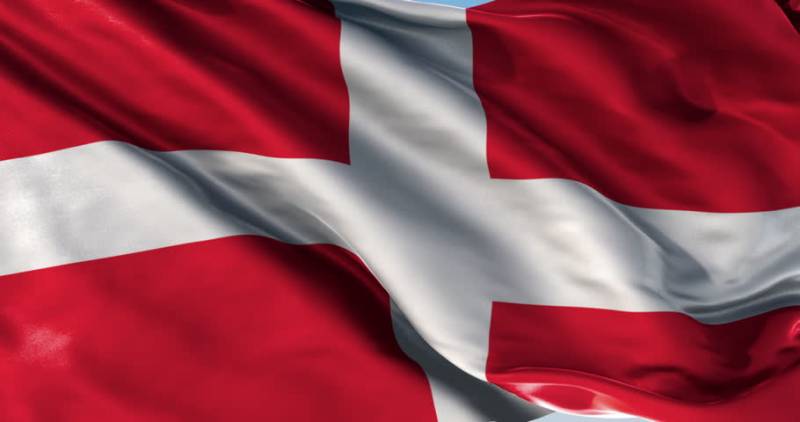
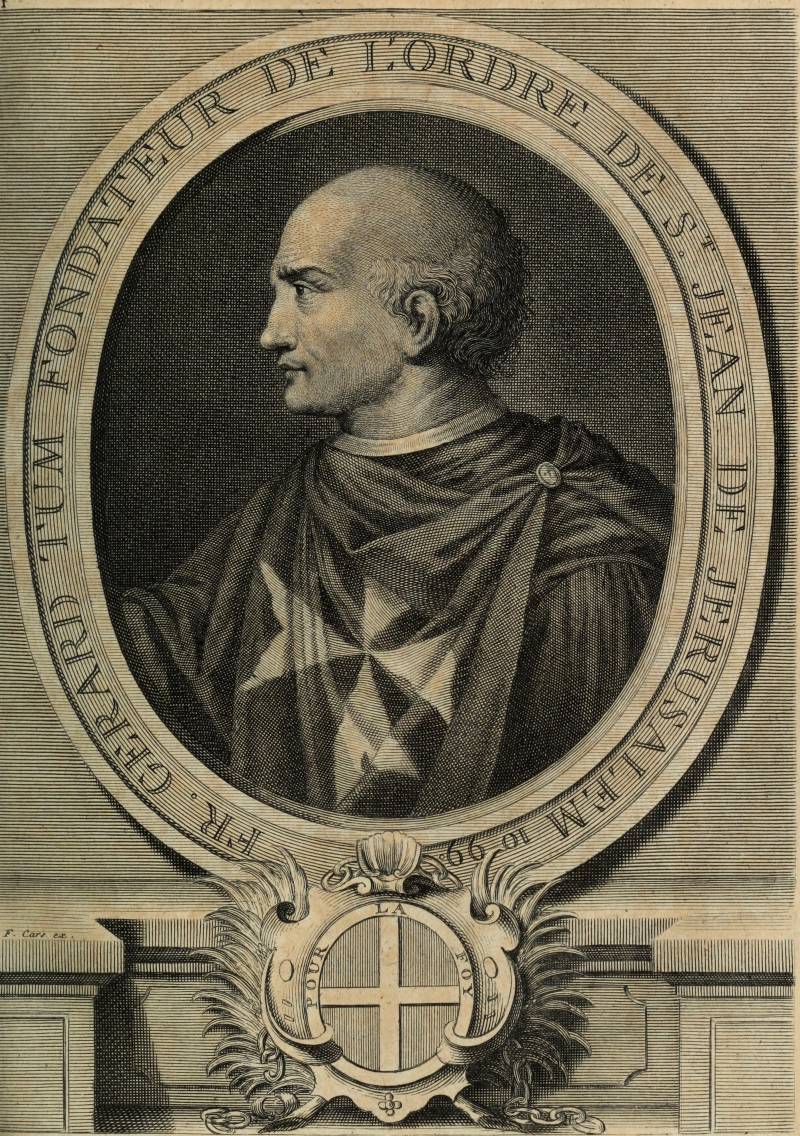
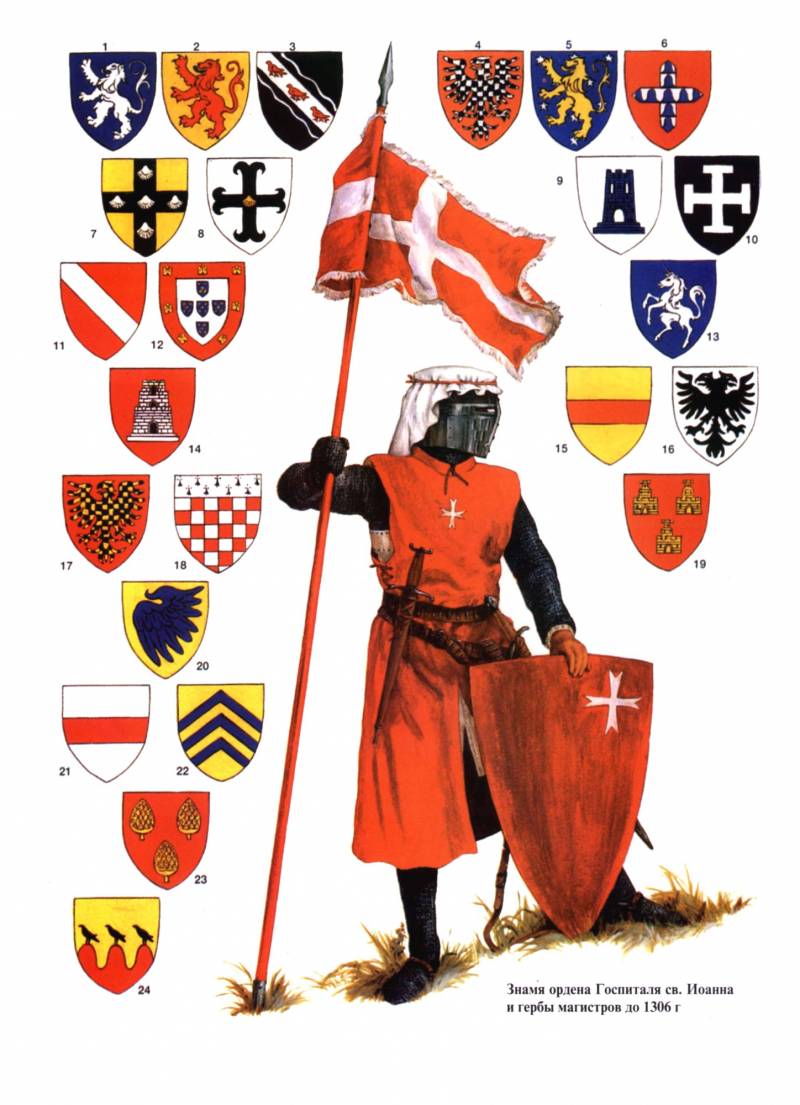
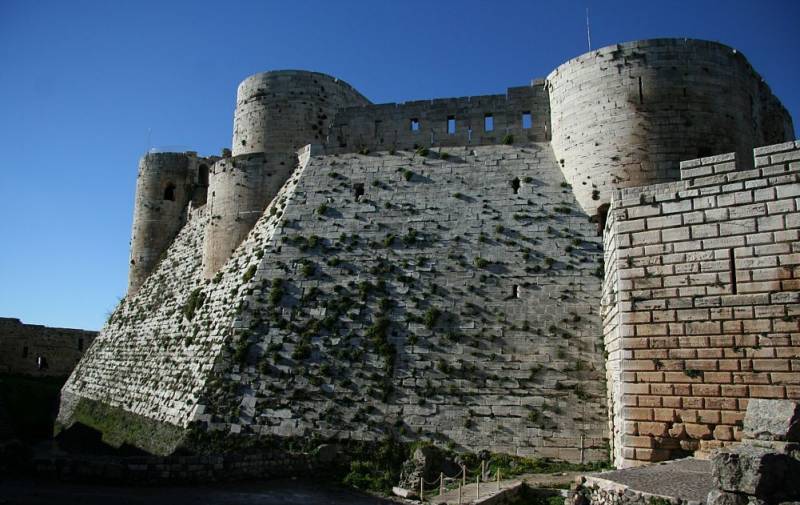
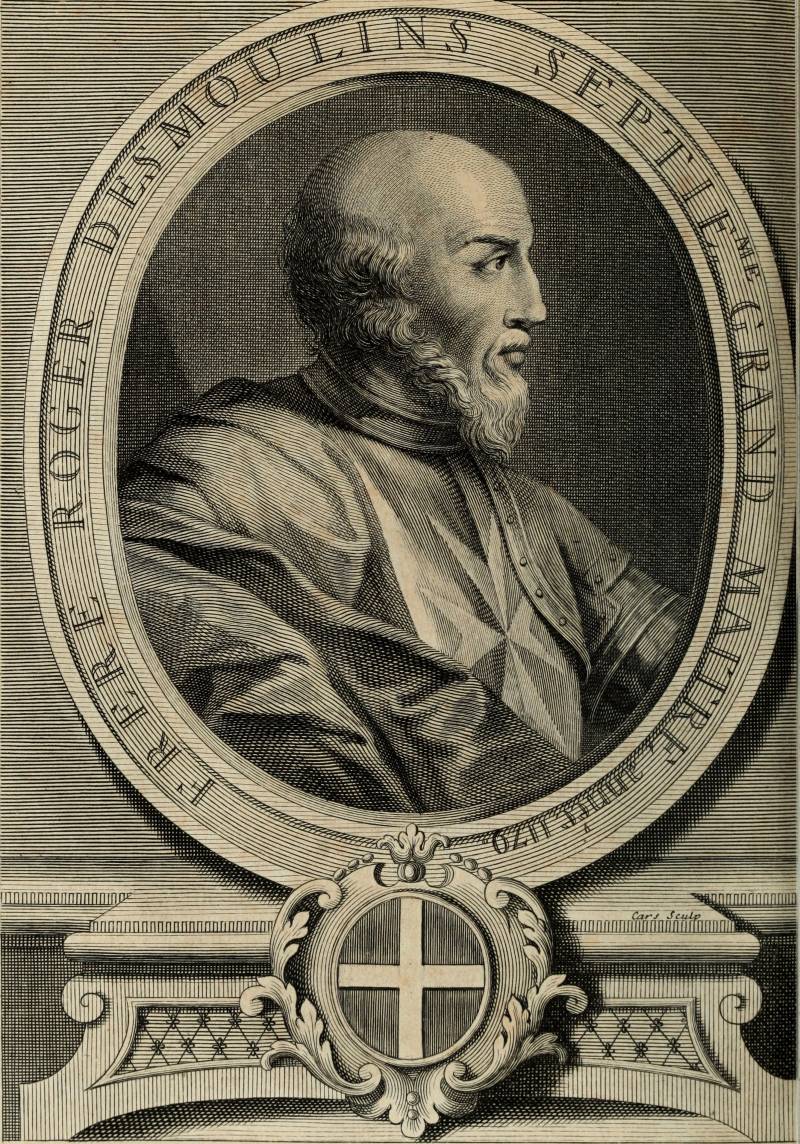
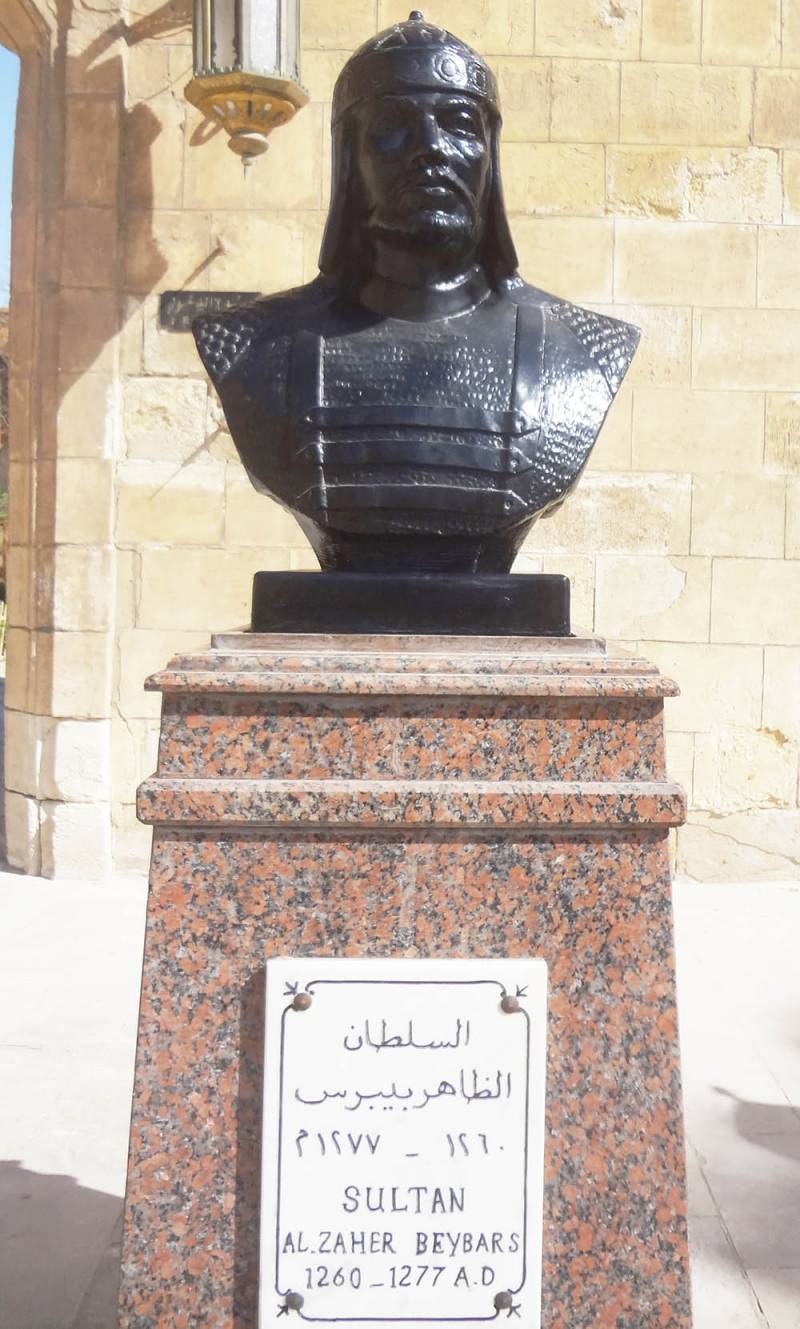
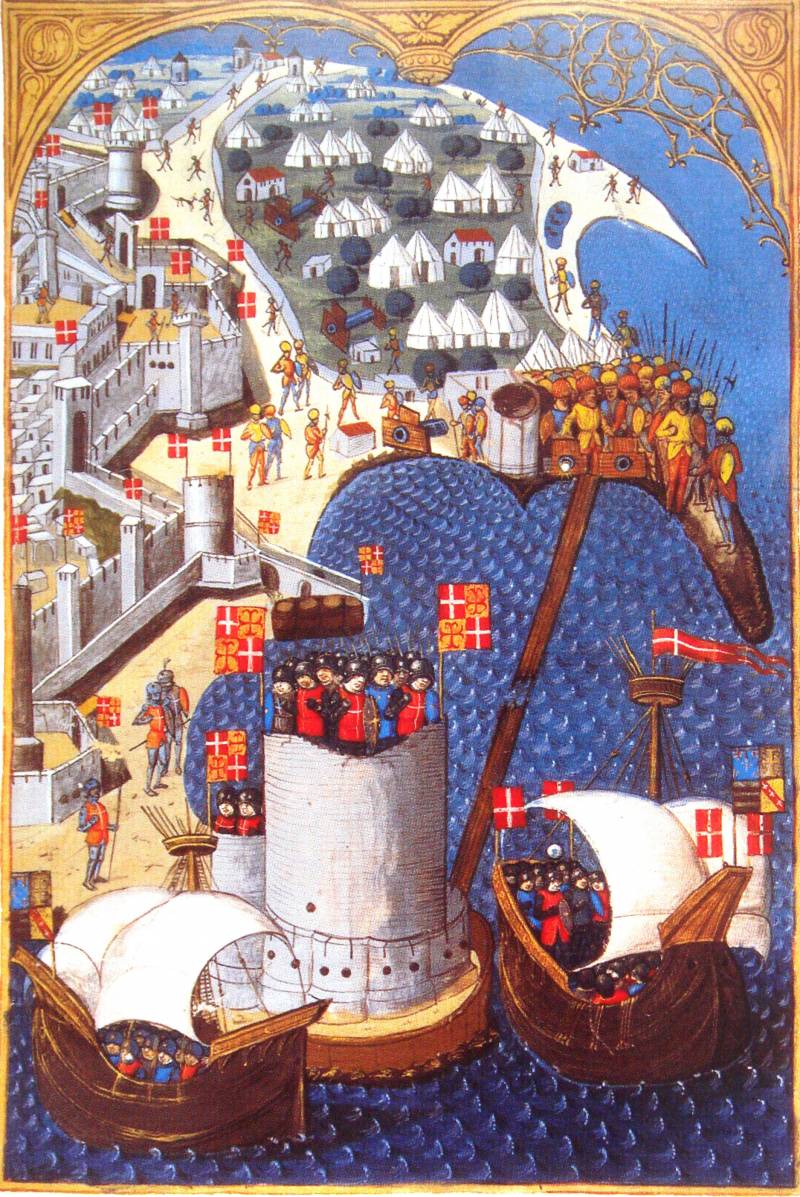
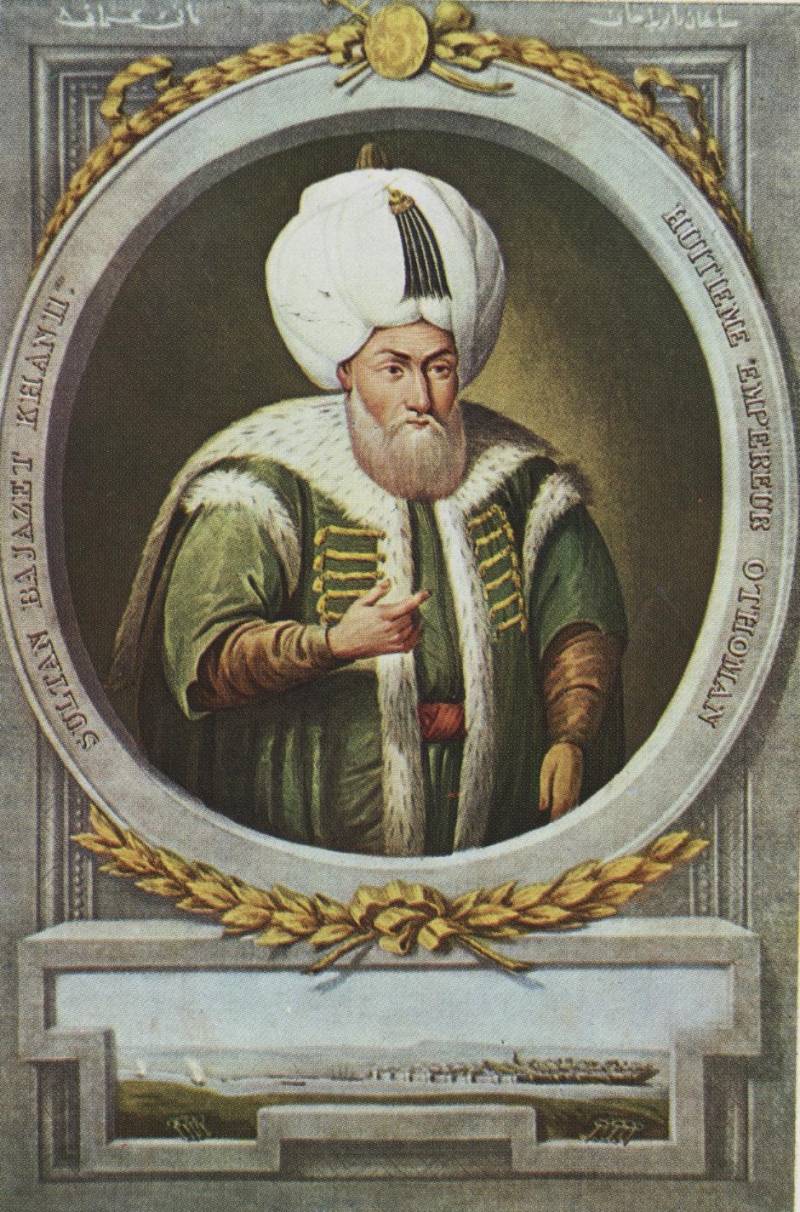
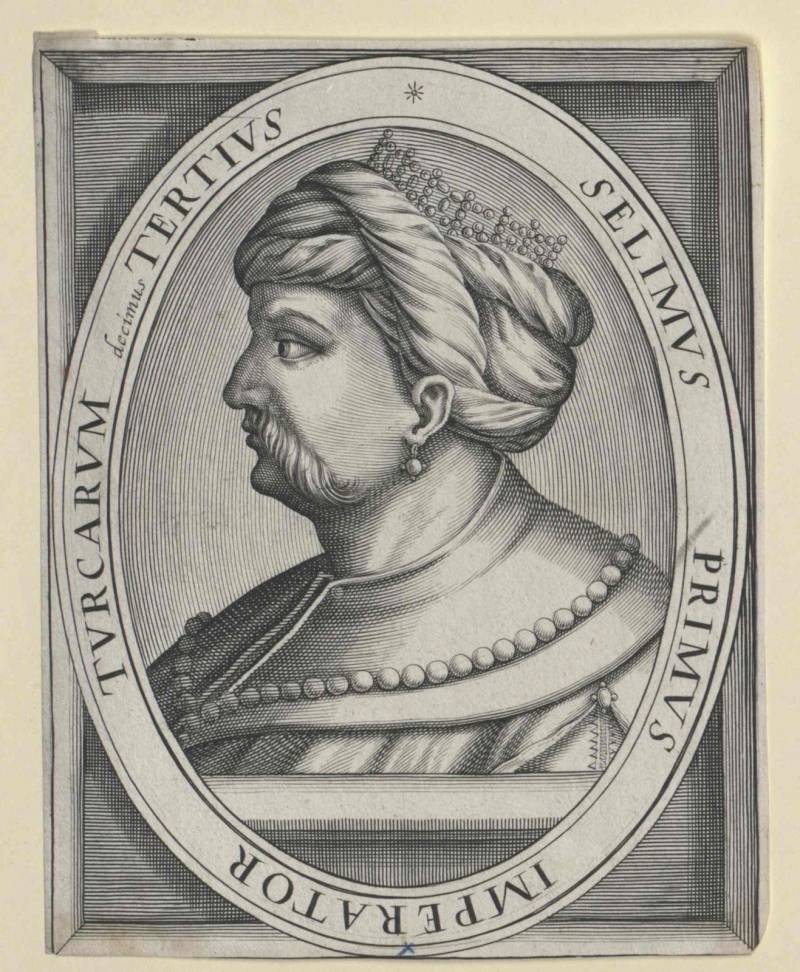
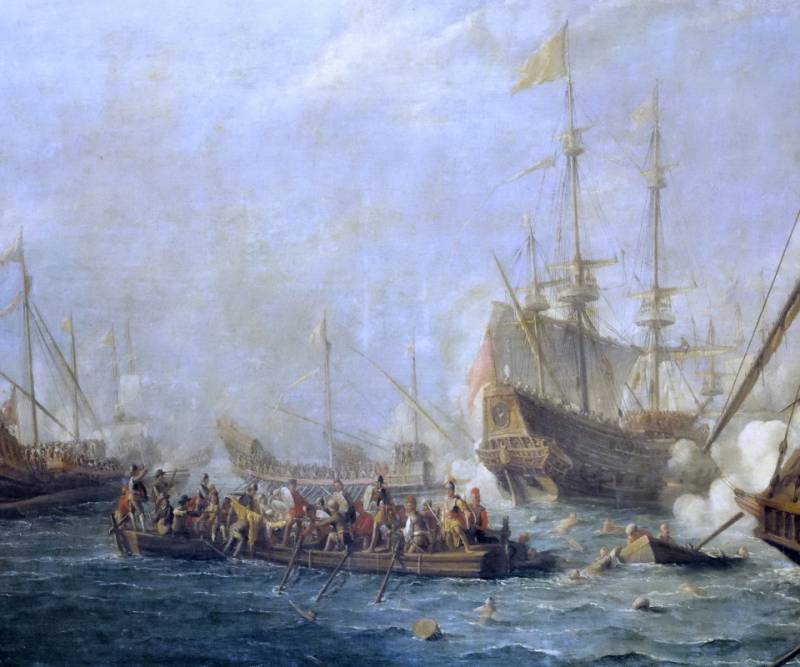
Information